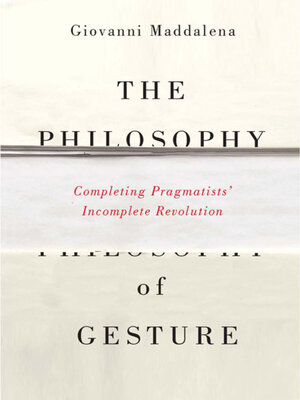The Philosophy of Gesture
ebook ∣ Completing Pragmatists' Incomplete Revolution
By Giovanni Maddalena

Sign up to save your library
With an OverDrive account, you can save your favorite libraries for at-a-glance information about availability. Find out more about OverDrive accounts.
Find this title in Libby, the library reading app by OverDrive.



Search for a digital library with this title
Title found at these libraries:
| Library Name | Distance |
|---|---|
| Loading... |
In everyday reasoning - just as in science and art - knowledge is acquired more by "doing" than with long analyses. What do we "do" when we discover something new? How can we define and explore the pattern of this reasoning, traditionally called "synthetic"? Following in the steps of classic pragmatists, especially C.S. Pierce, Giovanni Maddalena's Philosophy of Gesture revolutionizes the pattern of synthesis through the ideas of change and continuity and proposes "gesture" as a new tool for synthesis. Defining gesture as an action with a beginning and an end that carries on a meaning, Maddalena explains that it is a dense blending of all kinds of phenomena - feelings and vague ideas, actual actions, habits of actions - and of signs - icons, indexes, and symbols. When the blending of phenomena and signs is densest, the gesture is "complete," and its power of introducing something new in knowledge is at its highest level. Examples of complete gestures are religious liturgies, public and private rites, public and private actions that establish an identity, artistic performances, and hypothesizing experiments. A departure from a traditional Kantian framework for understanding the nature and function of reason, The Philosophy of Gesture proposes an approach that is more attuned with our ordinary way of reasoning and of apprehending new knowledge.







